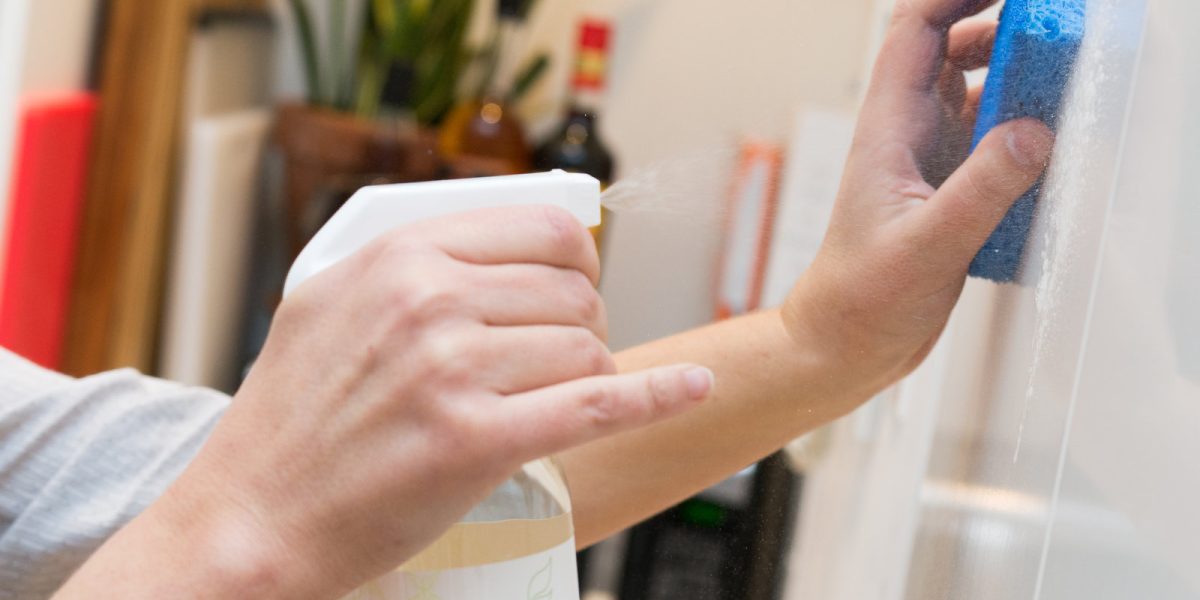
- Hard Surfaces: This category includes countertops, tiles, glass, metal, and wood. Hard surfaces are generally easier to clean but require different approaches based on the material’s durability and porosity.
- Soft Surfaces: Carpets, upholstery, and fabrics fall into this category. Soft surfaces often require more specialized cleaning techniques to remove stains, odors, and allergens.
- Specialty Surfaces: These include high-touch areas like electronics, stainless steel appliances, and delicate items like antique furniture or artworks. Each has unique cleaning needs to avoid damage.
- Safety First: Always use appropriate personal protective equipment (PPE) such as gloves and masks. Ensure proper ventilation if using chemical cleaners.
- Read Labels: Check the labels of cleaning products to ensure they are suitable for the surface you plan to clean.
- Test First: When using a new cleaning product or technique, test it on a small, inconspicuous area first to avoid potential damage.
- Use the Right Tools: Different surfaces require different tools, such as microfiber cloths for delicate surfaces or scrub brushes for tough stains.
- Granite: Use a mild detergent and warm water. Avoid acidic cleaners which can damage the surface. For added shine, use a granite cleaner or polish.
- Quartz: Similar to granite, use a mild detergent and warm water. Avoid abrasive cleaners.
- Laminate: Clean with a damp cloth and a mild detergent. Avoid excessive moisture to prevent warping.
- Ceramic: Use a solution of warm water and mild detergent. For grout, use a grout cleaner or a mixture of baking soda and water.
- Porcelain: Similar to ceramic, but ensure you rinse thoroughly to avoid residue.
- Use a glass cleaner or a mixture of vinegar and water. Wipe with a lint-free cloth or paper towel in a circular motion to avoid streaks.
- Stainless Steel: Clean with a mild detergent and water, followed by a rinse with clean water. Use a microfiber cloth to avoid streaks. For extra shine, use a stainless steel cleaner.
- Aluminum: Use a mixture of water and mild detergent. Avoid abrasive cleaners that can scratch the surface.
- Furniture: Dust regularly with a soft cloth. For deeper cleaning, use a wood cleaner and follow with a conditioner to maintain the finish.
- Floors: Sweep or vacuum regularly. Clean with a wood floor cleaner, avoiding excess water which can damage the wood.
- Vacuuming: Regular vacuuming helps remove dust and dirt. Use a vacuum with a HEPA filter for better allergen control.
- Spot Cleaning: Blot stains with a clean cloth and a carpet cleaner. Avoid scrubbing as it can damage the fibers.
- Deep Cleaning: Use a carpet cleaner or hire a professional for periodic deep cleaning. Steam cleaning can be effective for removing embedded dirt and allergens.
- Vacuuming: Remove loose dirt and dust with a vacuum cleaner. Use the upholstery attachment for best results.
- Spot Cleaning: Treat stains with an appropriate upholstery cleaner. Test on a small area first.
- Professional Cleaning: For heavily soiled or delicate fabrics, consider professional cleaning services.
- Washing: Follow the care label instructions for washing and drying. Use gentle detergents for delicate fabrics.
- Stain Removal: Treat stains promptly with the appropriate stain remover.
- Screens: Use a microfiber cloth slightly dampened with water or a screen cleaner. Avoid using excessive moisture or abrasive materials.
- Keyboards and Mice: Use compressed air to remove debris. Wipe surfaces with a disinfecting wipe or alcohol-based cleaner.
- Regular Cleaning: Use a mild detergent and warm water, followed by drying with a soft cloth.
- Removing Smudges: Use a stainless steel cleaner or a mixture of vinegar and water.
- Furniture: Dust with a soft, dry cloth. Use specific wood cleaners for antique finishes. Avoid over-wetting.
- Artworks: Consult a professional for cleaning delicate artworks. For frames, dust gently and avoid using water or harsh chemicals.
- Routine Cleaning: Establish a cleaning schedule to prevent buildup and maintain cleanliness.
- Declutter First: Remove items from surfaces before cleaning to reach all areas effectively.
- Use Microfiber Cloths: They are highly effective for trapping dust and dirt without leaving residue.
- Disinfect High-Touch Areas: Pay special attention to frequently touched surfaces like doorknobs, light switches, and handles.
- Eco-Friendly Products: Opt for biodegradable and non-toxic cleaning products whenever possible to minimize environmental impact.
- Waste Management: Dispose of used cleaning materials responsibly and recycle where possible.
- Water Conservation: Use water efficiently by not over-wetting surfaces and using appropriate amounts of cleaning solutions.
Cleaning All Surfaces:
Cleaning all surfaces effectively is crucial for maintaining a healthy and hygienic environment, whether it’s at home, in the workplace, or in public spaces. This guide provides an in-depth look at the principles, techniques, and best practices for cleaning different types of surfaces to ensure thorough cleanliness and sanitation.
1. Understanding Surface Types and Their Cleaning Needs
Surfaces come in various materials, each requiring specific cleaning methods to maintain their appearance and function while ensuring they are hygienic. The primary surface types include:
2. General Cleaning Principles
Before delving into surface-specific cleaning methods, it’s essential to understand some general principles:
3. Cleaning Hard Surfaces
Countertops (Granite, Quartz, Laminate):
Tiles (Ceramic, Porcelain):
Glass Surfaces (Windows, Mirrors):
Metal Surfaces (Stainless Steel, Aluminum):
Wood Surfaces (Furniture, Floors):
4. Cleaning Soft Surfaces
Carpets:
Upholstery:
Fabrics:
5. Cleaning Specialty Surfaces
Electronics:
Stainless Steel Appliances:
Antique Furniture and Artworks:
6. Tips for Efficient and Effective Cleaning
7. Environmental Considerations
8. Conclusion
Cleaning all surfaces is not just about maintaining aesthetics; it’s crucial for health and hygiene. Understanding the needs of different surface types and applying the appropriate cleaning methods ensures that spaces remain clean, safe, and welcoming. By following the principles and techniques outlined in this guide, you can achieve effective and efficient cleaning, contributing to a healthier living and working environment.
